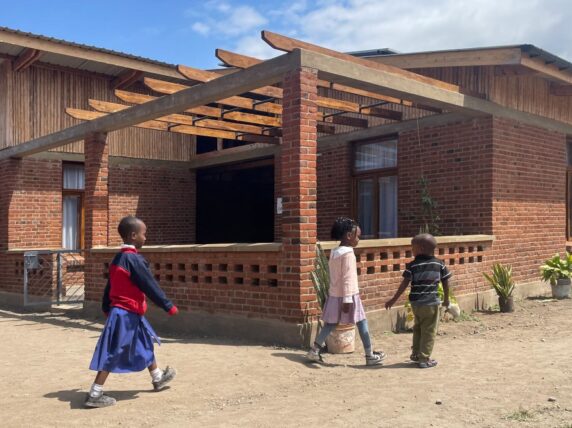How can we measure progress on the UK’s commitments to localisation without data?
Governments are committing to locally led development as a process of shifting power and resources to local communities and putting their knowledge, capacities and agency at the centre.
There are numerous instruments for civil society to hold governments to account on these commitments, such as the Grand Bargain (2016) and Grand Bargain 2.0 (2021).
In 2021, the latest tool was added to this kit – the Development Assistance Committee (DAC) Recommendations on Enabling Civil Society in Development Co-operation and Humanitarian Assistance. While not legally binding, this instrument is particularly salient for expressing the joint political commitment of all 31 OECD DAC members, including the UK government. As the first international standard for donors on enabling civil society organisations (CSOs), it recognises CSOs not just as implementing partners but as independent development and humanitarian agents “in their own right.”
Unpacking the DAC recommendations
Among the recommendations is an emphasis on meaningful participation of local CSOs throughout programming and policy-making based on equal power relations. It explicitly focuses on providing flexible and predictable funding, both programmatic and core support. Also noteworthy is the pledge on improving transparency and accessibility of information on funding for civil society.
CSOs have criticised donors for making minimal progress on increasing funding flows to local partners. In the absence of a formal assessment, we as civil society need to conduct our own analysis to measure progress made by the UK government.
Taking stock of the UK government’s track record
The UK has been key in shaping the localisation agenda since the 2016 World Humanitarian Summit. In 2019, an independent review from the Independent Commission for Aid Impact (ICAI) commended DFID for implementing strong accountability mechanisms and directly funding Southern-led organisations (although BRAC, an NGO from Bangladesh, accounted for a significant portion of that funding in 2011–2021 – an outlier not replicated elsewhere). In 2020, FCDO released humanitarian response guidance for international NGOs to pass on their ICR rate to local partners to cover overhead costs. This year the UK government launched a £38 million programme to directly support women’s rights organisations.
But these positive developments are overshadowed by growing concern that progress will be reversed. The UK once proudly adhered to the 0.7% benchmark of GNI committed to aid, until it dramatically dropped to 0.36% in 2022, with nearly double the aid budget spent on refugees in the UK than in Africa and Asia. The FCDO has been called to urgently clarify its position on localisation and take concrete actions, such as eliminating strict compliance and English language requirements for funding proposals, increasing the duration and amount of funds directly reaching local CSOs and ensuring funds cannot be withdrawn at short notice.
Join the Changing donor policy and practice working group!
Bond’s Changing donor policy and practice working group works to influence donor policy and practice to shift how donors work for a more equitable development system. It is open to all Bond members and is welcoming new members who want to help shape a new funding ecosystem where people in communities drive change.
Join the groupHow much of the shrinking UK aid budget is reaching local CSOs?
This brings us back to the pledge on improving transparency of funding flows: it’s astonishingly difficult to obtain comprehensive and disaggregated data on the UK government’s funding of CSOs. DevTracker does not disaggregate data by implementer so it’s impossible to isolate CSO recipients, whether local or international. Over half of the UK’s bilateral aid in 2021 was recorded with an unspecified recipient, either because it was spent inside the UK or downstream recipients were not defined. The latest report on provisional UK aid spend for 2022 also doesn’t specify the recipient type.
At a micro-level we can assess the raw data directly from the International Aid Transparency Initiative (IATI) by tracing the spending by all UK agencies (including the FCDO) that voluntarily publish to IATI. There is no way, however, to determine what percentage of total funding has been published and agencies are not required to specify recipient type, making it impossible to track flows to local CSOs.
Where specified for UK funding published to IATI (about half of spending from 2014 to 2023), 8% reached international NGOs and only 0.5% reached national NGOs. According to the OECD, the UK’s contribution to CSOs decreased from 17% of bilateral ODA in 2020 to 15% in 2021, of which only 11% was directed to “developing country-based CSOs.”
Next steps for the FCDO and civil society
DAC will draft its first report on members’ adherence to the DAC commitments by 2026, though it’s already been two years since the recommendations were launched and the lack of progress made by the UK government should be of concern. Yet, how can we hold the UK government accountable if we can’t find readily accessible data required to assess its performance? It shouldn’t require investigative journalism tactics or reliance on anecdotal experiences of implementing partners to glean this basic information.
Bilateral donors, such as Denmark, Netherlands, Canada and USA, have made visible progress on localising their resource allocations, policies and procedures. The FCDO can learn from its peers and adopt some of their best practices to reinstate itself as a role model in international development, while also revamping its information systems to make data on funding for civil society more transparent.
We are urgently calling upon the UK government to adhere to the DAC recommendations by committing to the following:
- Define localisation, locally led development and local organisations,
- Track and publish easily accessible data on funding flows to local CSOs,
- Ring fence a percentage of funding for local partners.
The DAC recommendations explicitly invite NGOs to monitor adherence of members; let’s heed this call and remember that the onus should really be on CSOs in high-income countries to hold DAC members’ feet to the fire. After all, why expect local partners to fix the broken system that has disenfranchised and excluded them in the first place?
NOTE: A freedom of information request was submitted to the FCDO on 2 June, 2023 to obtain disaggregated data on ODA flows to local CSOs. A response was expected by 30 June but was never received.
Category
News & Views



